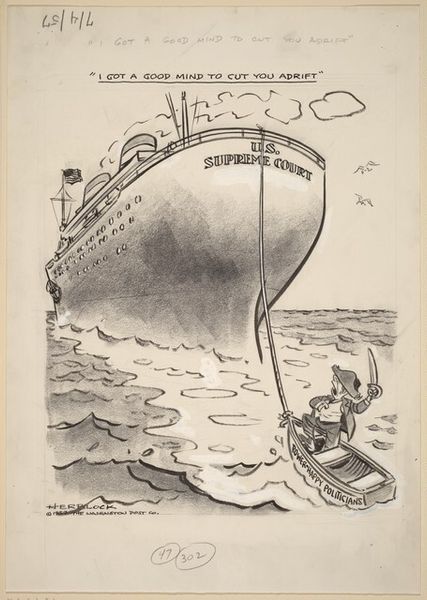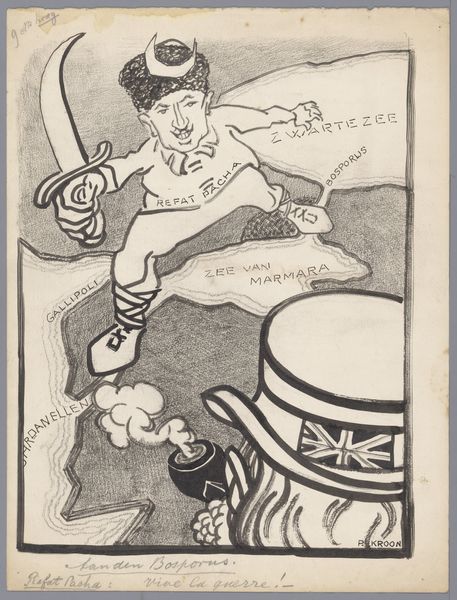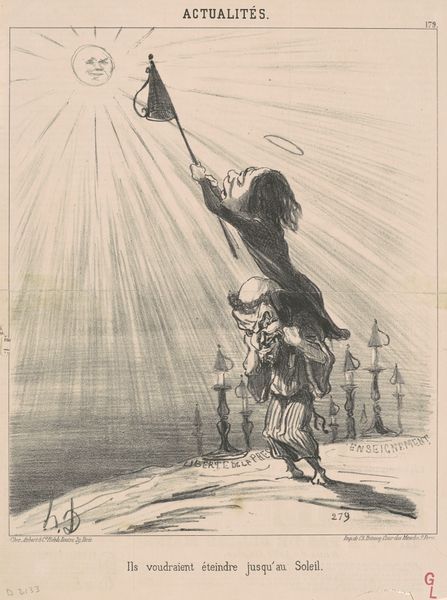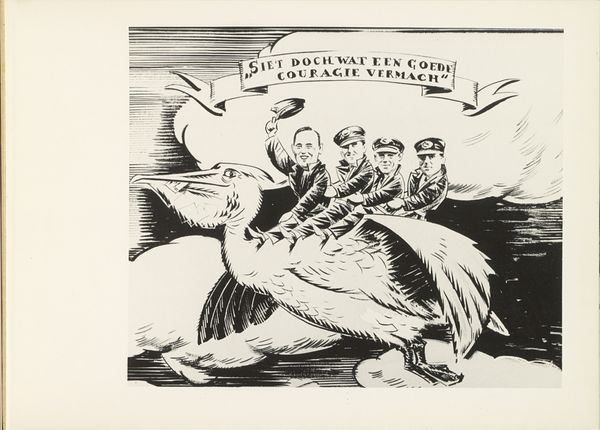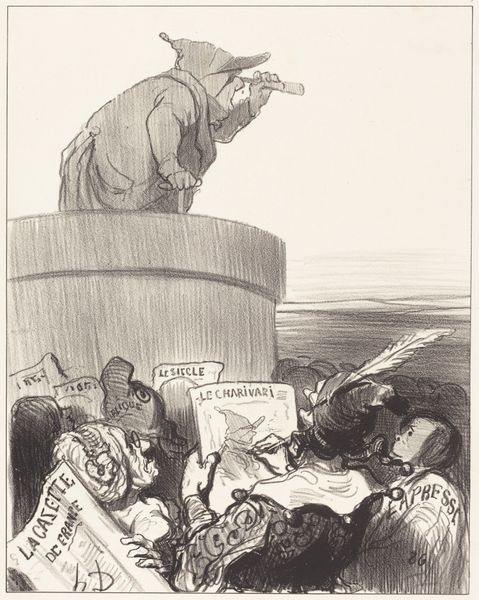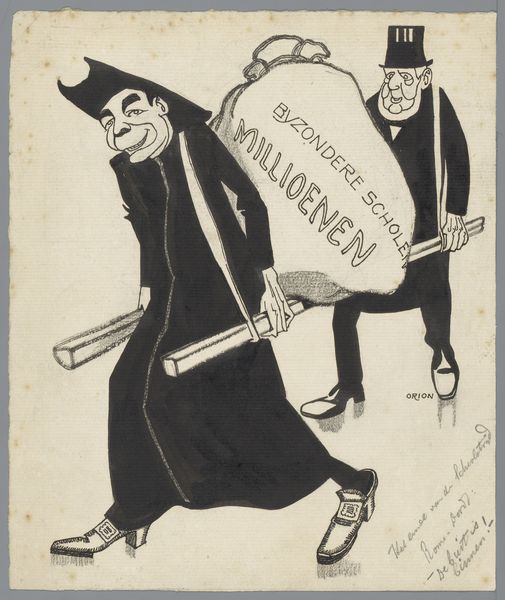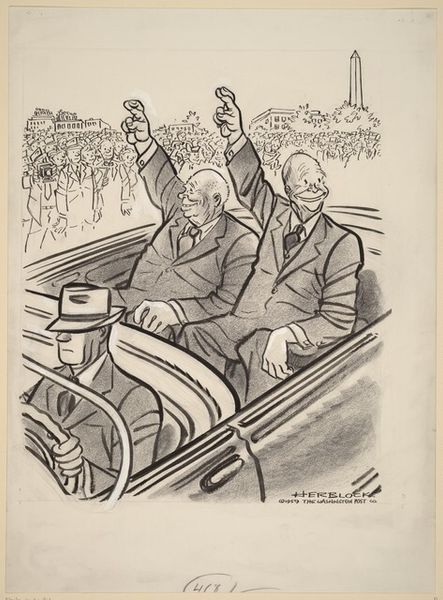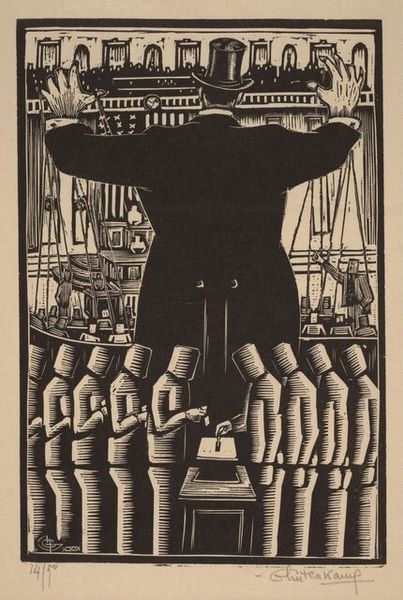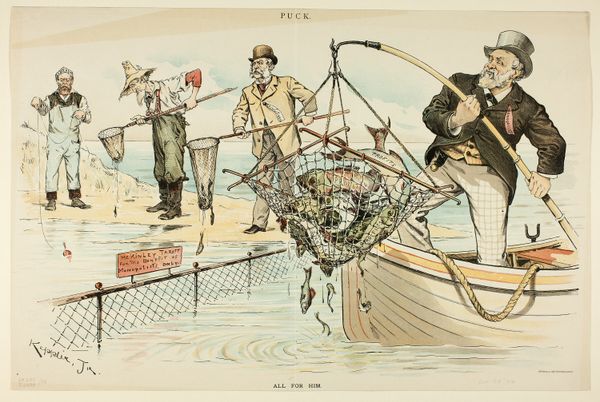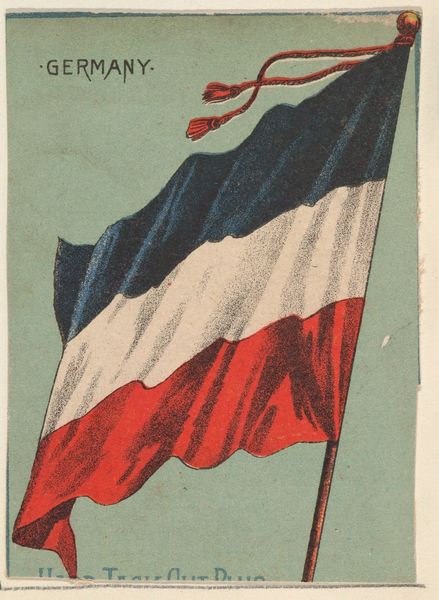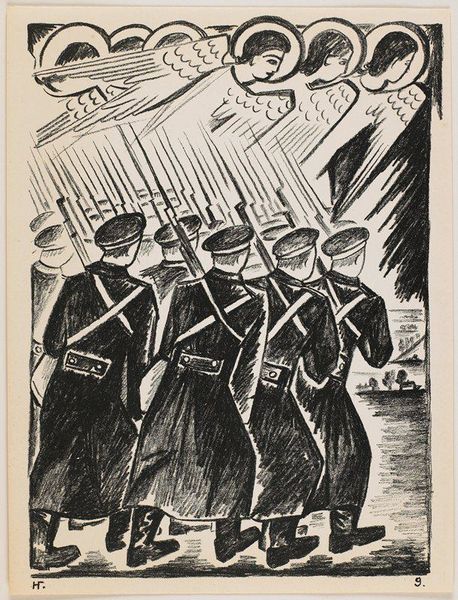
print, acrylic-paint, poster
#
narrative-art
# print
#
war
#
acrylic-paint
#
figuration
#
poster
#
modernism
Copyright: Public Domain: Artvee
Editor: Okay, so this is Edward Penfield’s 1918 poster, “Every Girl Pulling for Victory, Victory Girls United War Work Campaign.” It seems like it’s acrylic paint on a printed poster, which is a striking juxtaposition of mediums, actually. It feels optimistic, like a call to action, but what’s especially interesting to you about this piece? Curator: I find the materiality and its implications fascinating. Posters, by their nature, are mass-produced. Using acrylic on it elevates it but also speaks to a specific type of quick application needed during times of war. It emphasizes the wartime mobilization efforts, doesn’t it? It is also interesting how traditional craft is integrated into the machine of war. Editor: Absolutely! So the material choices really underscore the social and political environment in which it was created. Does the female figure rowing add another layer of meaning? Curator: Precisely. Notice her labor—the physical act of rowing visualized in a style reminiscent of modernist ideals with its sharp edges. Rowing, pulling, uniting. This is not gentle, lady-like work; this is a call for intense output and a rejection of societal expectations about what female labor looked like prior. How might we examine the production and consumption of imagery like this during the war? It was meant for circulation. Editor: It's like the poster itself is performing the work it depicts. What was this kind of poster typically printed on? I'd guess some type of thin paper to lower production cost. Curator: That's right, likely inexpensive paper stock because quantity was key to saturate society. The cheapness amplifies the value placed on collective output. And once the war was over, what then? Did its materiality play a role in its value afterward? It's now an art object, but back then, was its destruction considered insignificant? Editor: So it seems Penfield highlighted labor in his composition, the war efforts on the printing materials used to further a wartime objective. Curator: Exactly! Editor: It's like the materials become active participants in the message, embodying the labor and production that the poster is promoting. This new perspective helps me reconsider the interplay of art, labor, and societal expectations.
Comments
No comments
Be the first to comment and join the conversation on the ultimate creative platform.

